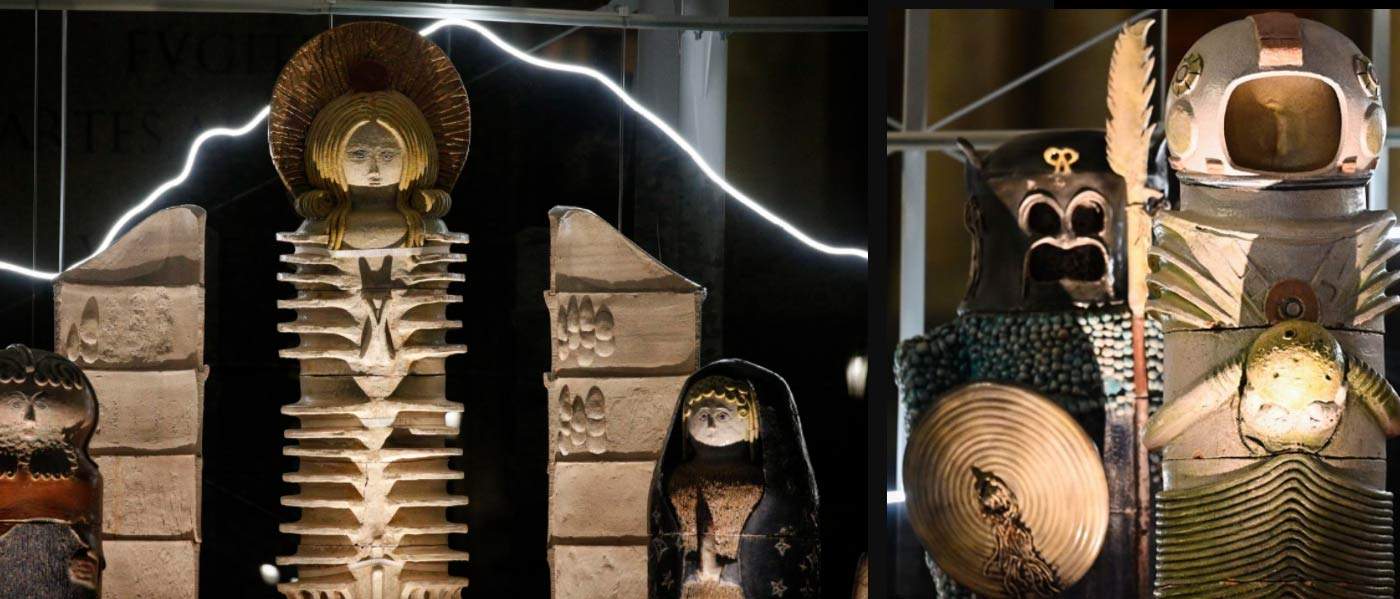There is controversy over the traditional nativity scene in St. Peter’s Square, installed every year in front of the Vatican basilica: it has been a tradition since 1982 (John Paul II was the pope who launched this use) that every year a city in Italy sends its nativity scene to Vatican City, and this year it was the turn of Castelli in Abruzzo, in the province of Teramo to be exact. The figurines of the Castelli nativity scene, placed in the center of Bernini’s colonnade last December 11, were made between 1965 and 1975 by students of the “Grue” art high school in the Abruzzo town, which is known for its ceramic tradition: the nativity scene consists of about fifty characters, fifteen of which arrived at the Vatican. They are made, of course, of ceramics and are large cylindrical figures that, the Diocese of Teramo explains, have “some descriptive details such as hair and beards reminiscent of Mesopotamian sculpture” but also include “references to Renaissance art, twentieth-century neo-Baroque and informal art.”
However, there are also bizarre figures, for example that of an astronaut. “Teachers and students,” reads the official presentation, “also wanted to immortalize important events of the contemporary world, and so within the work we find eccentric statues compared to the traditional figures of the Nativity, such as the astronaut, which refers to the conquest of the moon. The Nativity scene was exhibited in Rome at Christmas 1970 and later in Jerusalem, Bethlehem and Tel Aviv. This work represents a happy synthesis of tradition and acceptance of the new, research and experimentation. For us, today’s students, a shining example of collective design capacity. An inspiration and an aspiration.”
The nativity scene has come into the eye of the storm because it is considered by many to be ugly and inappropriate. The characters include a kind of warrior with a monstrous helmet, who looks very much like the villain from Star Wars, the film released in Italy under the title “Star Wars” in 1977, and who has been particularly targeted on social media and beyond. And so the criticism rains down: among the less tender ones is Vittorio Sgarbi, according to whom this nativity scene is a “humiliation of Catholicism,” as he wrote on journalist Nicola Porro’s blog (“the characters,” said Sgarbi, “do not recognize themselves, these things do not concern the Christian world, they are a caricature, a fiction, the religious world, which in art has had its consecration, has been betrayed”). Petitions to ask the Vatican for removal also follow one another on change.org: “Without prejudice to the cultural value of the Castelli nativity scene in the province of Teramo and the historical moment during which it was made (the 1960s and 1970s) that explains the presence of an astronaut,” reads one of them, “it appears inapropriate to have put a figure of war and death in a scene of the Christmas of Jesus, Prince of Peace and Innocent Lamb. Leaving aside the judgment on the ugliness or beauty of the nativity scene as a scene of the Birth of the Savior, and since so many other figures made by the same artists were available, it is not explained why it occurred to those who were to decide on the sacred composition to put a warrior with horns and with a skull imprinted in his helmet.”
And what does the pope say? For now he does not comment, but there are those who note that, in last Sunday’s angelus, Pope Francis invited the faithful to see an exhibition of traditional nativity scenes but did not mention the one in Castelli. An intentional oversight? Who knows: in the meantime, the controversy continues, but the nativity scene will probably not be removed.
 |
| Vatican, controversy over nativity scene with character that looks like Star Wars villain |
Warning: the translation into English of the original Italian article was created using automatic tools. We undertake to review all articles, but we do not guarantee the total absence of inaccuracies in the translation due to the program. You can find the original by clicking on the ITA button. If you find any mistake,please contact us.